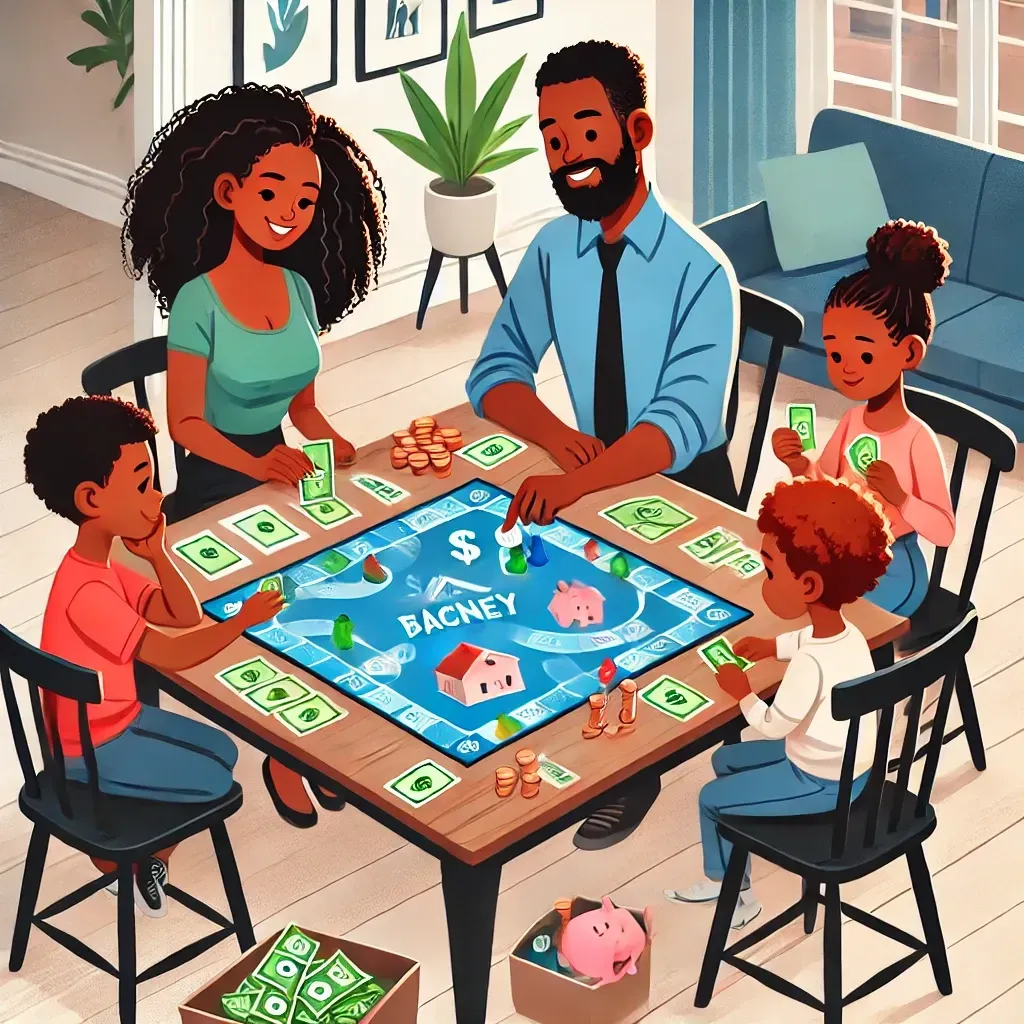
Saving vs. Spending: Helping Kids Make Smart Money Choices
One of the best lessons we can teach our children is how to manage money wisely. From a young age, kids see adults using money to buy food, clothes, toys, and entertainment, but do they understand the difference between saving and spending?
By introducing kids to smart money habits early, we set them up for a lifetime of financial success. Teaching them when to spend wisely and when to save for the future helps them build responsible money habits that will benefit them as they grow.
In this guide, we’ll break down how to:
✔ Explain saving vs. spending in a fun way
✔ Help kids develop good financial habits
✔ Use practical activities to teach money management
✔ Set financial goals that encourage long-term success

Let’s dive in!
1. Why Kids Need to Learn About Saving & Spending
📌 Money is a tool, and how kids use it will shape their financial future.
When children understand the power of saving, they learn to be patient, disciplined, and financially responsible. On the other hand, if they only focus on spending, they risk developing bad habits that could lead to debt and financial stress in adulthood.
💡 Key Money Lessons for Kids:
✅ Saving helps them prepare for bigger goals – Kids can learn to save for exciting purchases like a bike, a gaming console, or even college.
✅ Spending must be done wisely – If they spend all their money on impulse purchases, they might regret it later.
✅ A balance is important – Kids should enjoy their money while still planning for the future.
🔹 Example: Imagine your child gets $20 from a birthday gift. Should they spend it all on a toy immediately, or should they set aside some for a bigger purchase? This is where financial lessons begin!
2. Teaching Kids the Difference Between Saving & Spending
💰 The Three-Jar System
One of the easiest ways to help kids manage money is the Three-Jar System:
🔵 Save Jar – Money for long-term goals (big purchases, college, or emergency savings).
🟢 Spend Jar – Money for everyday wants (toys, snacks, small purchases).
🟡 Give Jar – Money to help others (charity, donations, gifts).
💡 Why It Works: This method encourages balanced spending, showing kids how to enjoy their money while also saving for the future.
📌 Activity Idea:
Let kids decorate their own jars and decide how much money goes into each one whenever they receive allowance or gift money.
🛑 The “Wait Before You Buy” Rule
Impulse buying is a habit that can lead to poor financial choices. Teach kids to wait at least 24 hours before making a purchase. This helps them decide if they truly want something or if it's just a passing desire.
📌 Example:
Your child wants a $15 toy but also wants a $50 LEGO set.
Instead of spending right away, encourage them to wait and think.
After a day or two, they might realize that saving for the LEGO set is a better idea!
💡 Why It Works: Kids learn to delay gratification, a skill that helps them make better financial choices as they grow.
🎯 Setting Savings Goals
Help kids understand why saving is rewarding by setting specific financial goals.
✔ Step 1: Let your child pick something they want to save for (ex: a new game, a scooter, or a trip).
✔ Step 2: Find out how much it costs and help them break it down into smaller savings steps.
✔ Step 3: Track their progress on a chart or savings app.
📌 Example:
Liam wants a $100 video game but only has $10. If he saves $5 per week, he’ll have enough in 18 weeks!
💡 Why It Works: When kids see their savings grow over time, they feel motivated to save more!
3. Helping Kids Make Smart Spending Decisions
💡 The “Needs vs. Wants” Game
Before making a purchase, ask kids:
✔ Is this a need (something important)?
✔ Is this a want (something fun but not essential)?
📌 Example: Buying school supplies is a need, while a new stuffed animal is a want.
💡 Why It Works: Kids learn to prioritize and make wise financial decisions instead of spending impulsively.
💰 Shop Smarter: Finding Deals & Discounts
Teach kids to compare prices, wait for sales, and use coupons.
📌 Example: If a toy costs $40, show them how waiting for a sale could bring the price down to $30—saving them $10!
💡 Why It Works: They learn the value of stretching their money and getting more for their dollar.
4. The Long-Term Benefits of Smart Money Habits
🎯 Why saving is the key to financial success:
✔ Kids who learn to save become responsible adults.
✔ They can afford bigger purchases without relying on debt.
✔ They build wealth over time, even with small amounts saved consistently.
📌 Example: If a child saves $2 per week from age 10 to 18, they’ll have $832—before adding any interest!
💡 Lesson: Even small savings add up!
📥 Want to Teach Your Kids the Power of Smart Money Choices?
If you want your kids to learn how to save wisely, spend responsibly, and build financial success, then you need Daveon Makes Sense of Saving Cents!
📥 Instant Download Available Now!
🔗 www.childrentowealth.com/product-details/product/daveonsavescents
✅ Give your child the gift of financial wisdom today!
